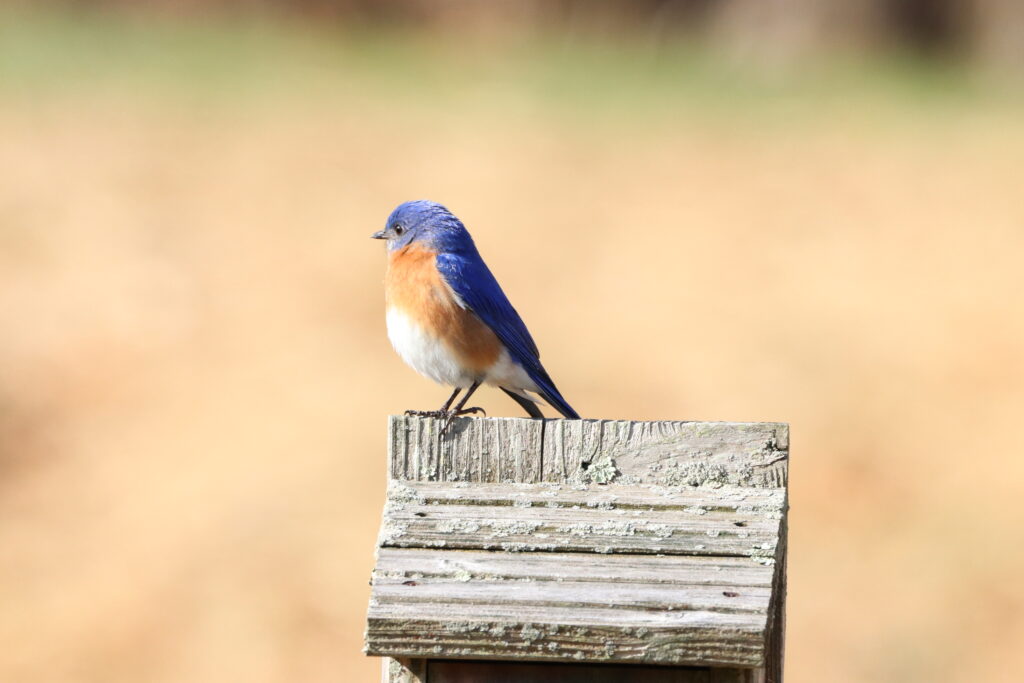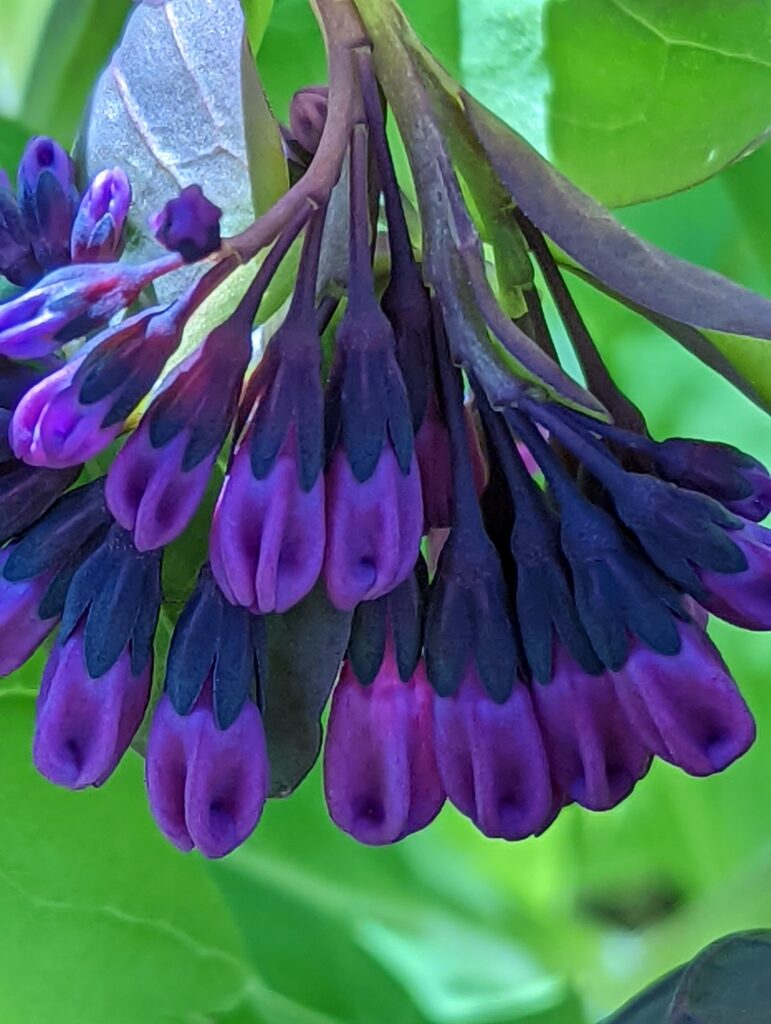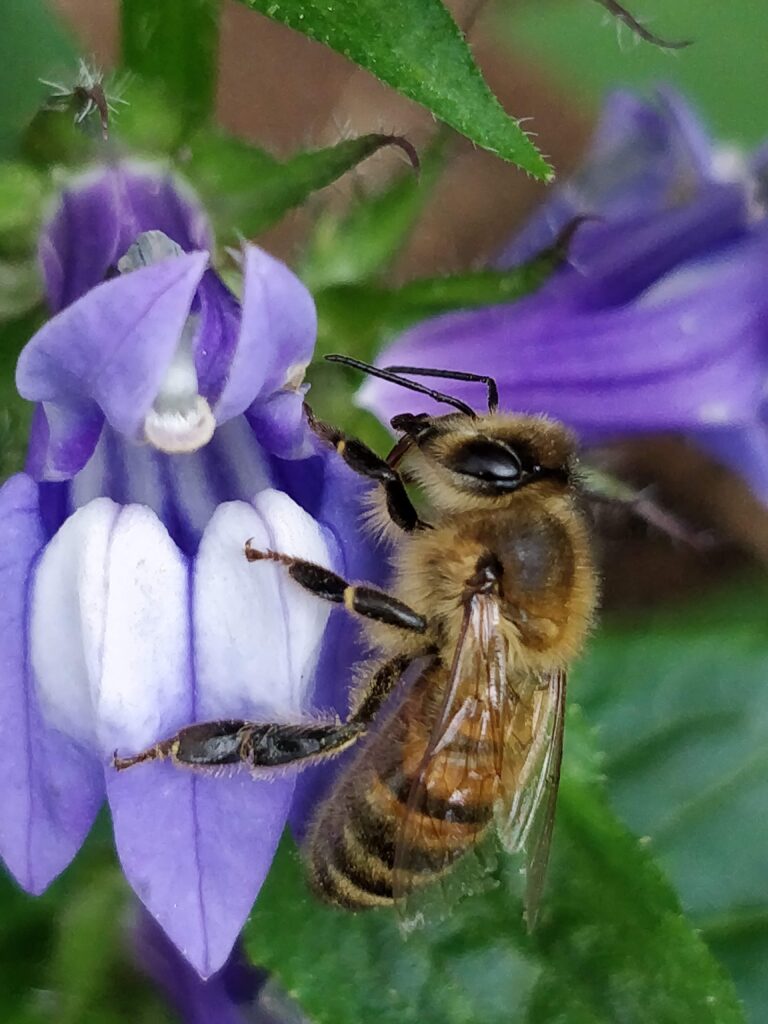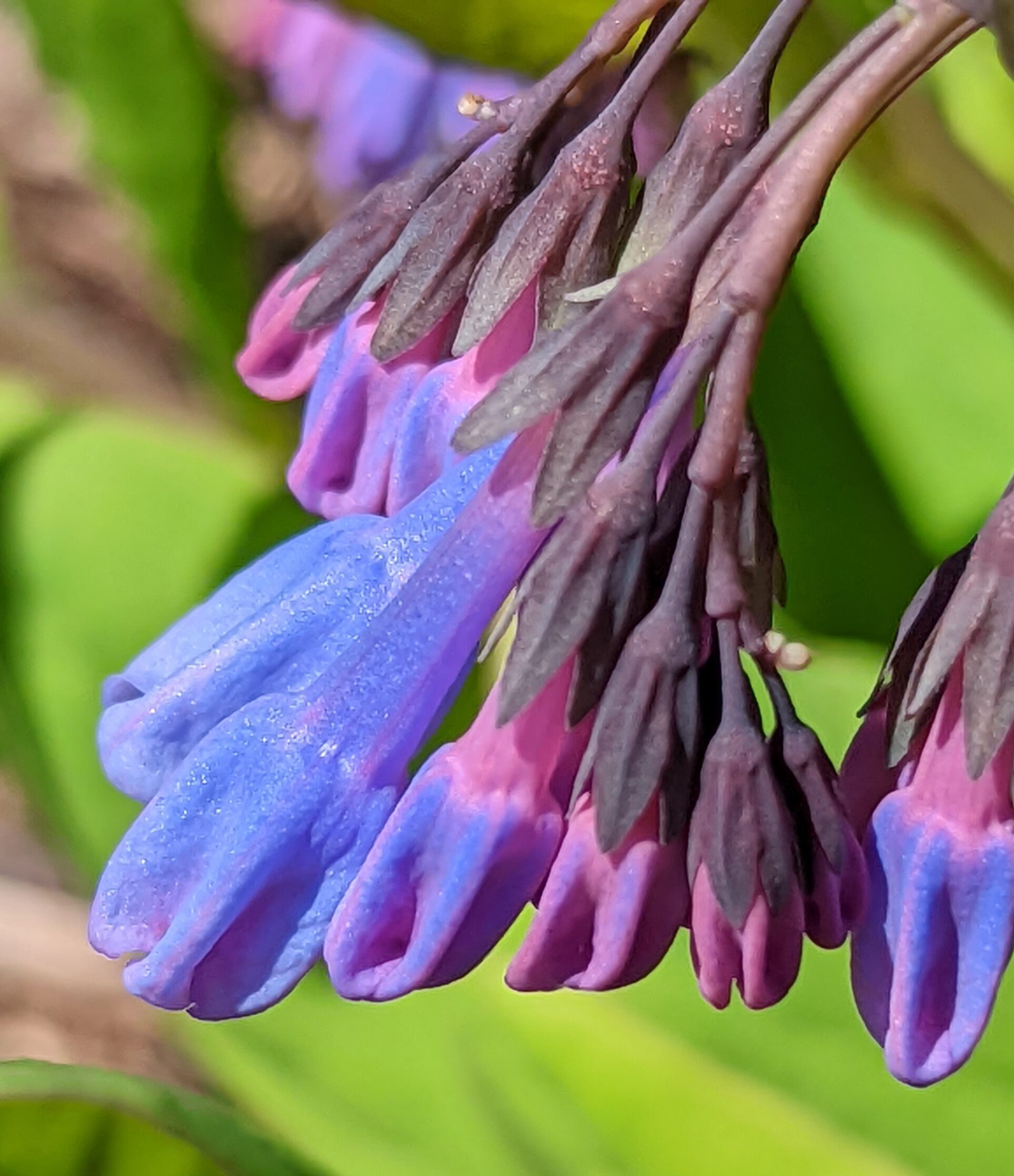One random question I remember reading as a young child was “Why are there no green mammals?” I don’t remember what class I was in or what the answer even was. But I pondered the thought with some intensity because it just seemed so odd to my young brain. I am sure at some point I probably stopped finding it interesting the moment someone pointed out to me: “Why do we park on the driveway and drive on a parkway?”. Conundrums of curiosities.
Out of the Blue, or is it Into the Blue?
Fast forward 30 some years and now I learn that Blue Jay’s are not actually blue. Blue pigment in nature is very rare. Though I am not going to tell that to this little male Eastern Bluebird perched in my garden:

Blue is in fact so rare in nature that it only appears in one type of butterfly, the obrina olivewing. The blue in this bird above (as is with the Blue Jay) is just a scattering of air pockets inside the feather which scatter blue light. See prior blog post Miss Understood.
So what about plants? Have you seen a blue rose? There are a few blue flowers, but not many. Hydrangea is about the first one to come to mind maybe hyacinth, or periwinkles.
And when you do come across them, you stop in your tracks to get a closer look. Apparently, so do bees. As I did with these Virginia Bluebells almost ready to bloom in my rain garden this afternoon that showed no signs of trouble after last night’s frost:

Less than 10% of the 280,000 species of flowers in the world produce blue flowers. And those that do are only showing up blue due to anthocyanin. Now you see the connection don’t you: “cyan” from the Ancient Greek kyanos meaning “dark blue enamel”.
Now when it comes to pollination and blue flowers, that’s a whole other ball game. I read this fact, and it pretty much is the reason for this post. It literally blew my mind!!!
“Among flowers which are pollinated without the intervention of bees or other insects (known as abiotic pollination), none were blue.
But when we looked at flowers that need to attract bees and other insects to move their pollen around, we started to see some blue.
This shows blue flowers evolved for enabling efficient pollination. Even then, blue flowers remain relatively rare, which suggests it is difficult for plants to produce such colours and may be a valuable marker of plant-pollinator fitness in an environment.”
So bees, like us, love the color blue. Like this bee last summer in my garden on a great blue lobelia bloom. I can’t say I blame them.


No responses yet